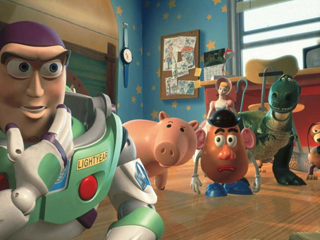







Art has been used to record daily routines, historical events, social trends and political views. Everything that we produce, create or pass on can be seen as a testament; documenting our very own life style, belief systems and cultural influences. There is so much archeological proof in art that that in itself is a form of documentary. In this mini-essay we will briefly examine three animated films and discuss how they manage to capture a certain element of truth and try to expand our definition of documentary animation.

Windsor McCay's, The Sinking of The Lusitania (1918), could be perceived as the first animation documentary. In this film we are presented with statistics, and facts; the Lusitania is a ship carrying over two-thousand passengers from New York to Liverpool.
We witness the ship's demise when a German submarine torpedoes it down. The film may be biased but it is still based on true events. This film allows us to glimpse into the past and witness a specific sequence in history. The Sinking of The Lusitania really does come close to the traditional idea of a documentary, but what if a film is not based in reality, can it still be a reliable source of truth?

Pixar's Toy Story (1995), is based very little on reality. Woody is a plastic cow boy that feels left out when a new and improved doll moves into the room/town. It is hard to watch Toy Story and believe that it is a form of documentary; however the characters in the film are actually based on childhood toys (ranging from early 50's to late 90's). From Mr. Potato Head to the Slinky Dog, these toys are all pop-culture icons in western society, specifically American. The film also denotes America's capitalist nature. Andy (the boy who owns all the toys) is always on the look out for newer and better toys. His favorite place is “pizza planet” a fast food diner with videogames.
We can also view the film through its advancements in technology. We can tell that the animation looks like no other. The film indicates the beginning of a new animation trend. Through the film's narrative we can deduce some truth from American society, but what if a film has no story, can it still serve as a justifiable source of documentation?
Walter Ruttman's Opus (1920), has no apparent narrative. It is not telling a specific story, and it makes no obvious statements. Still if we look at the beautifully painted shapes and colors we can tell that the artist is not interested in narrative, he is interested in motion. Opus is quite modern and stands apart as a piece that represents a new out look on culture that derives from Dada ideals. The Dada movement is a rebellion against structure (World War I being a great influence) and Opus does not follow any conventional structure.
Animation can be regarded as a genuine source of documentation, where new technologies, political stands, and economical status contribute greatly to its formation. Even if certain works are subjectively made to reinforce certain point of views they are still a product of their time where subconscious and conscious choices reveal a truth about its society.
Alan Kininsberg
2007